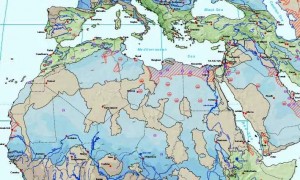And not Tulane.
The manner in which green has been posited thus far has taken on many of the contours of a straw man, to be admired at first then scorned, pitchforked and torn apart as a sort of cathartic as we settle back into the older ways of doing, well, business. Seeing green as a business practice or strategy short of a fundamental change in the way we view productivity and the capitalist system generally is a sure way to turn it into next year’s Dyanetics, if not its Macarena.
These straw dichotomies are reflected in many news stories and talking points that influence the way people perceive business and capitalism, our choices about the future and the prospects for change, not the least of which are policy papers from the big think tanks. They don’t have to take on the role of debunking climate change or reconcile with the utter incoherence of their own views of capitalism; they merely find an unguarded field and construct a zero-sum straw argument that brilliantly evades the point and blurs the real situation in favor of their stated beliefs or political slants as if that was its only goal. For example, the trope that we are faced with a choice between either a complete lockdown of all CO2 emissions or no regulations at all. The only voices perpetuating this facile take are the ones with the most limited, and vulnerable, views on capitalism and how it works. It shouldn’t be a surprise. In the words of Hyman Roth, this is the business we’ve chosen.
But we’re going to need to choose again. We have to extend our concept of capital beyond the mere financial to include human and natural capital and take stock of how we allocate value to resources, where their costs include more than their mere extraction and all resources are valued by what would be required to replace them. This is the road not back to the stone age but a sustainable natural and social environment. It’s all here in this book I just started, Natural Capitalism. Time to make something useful with all of this straw, put it out in a patch to scare away the crows.



